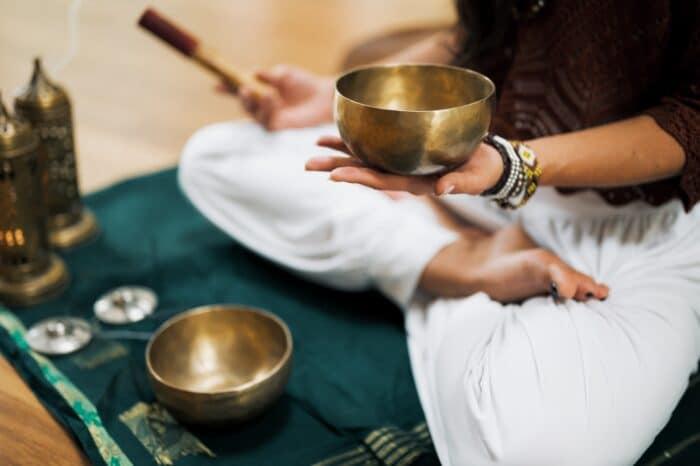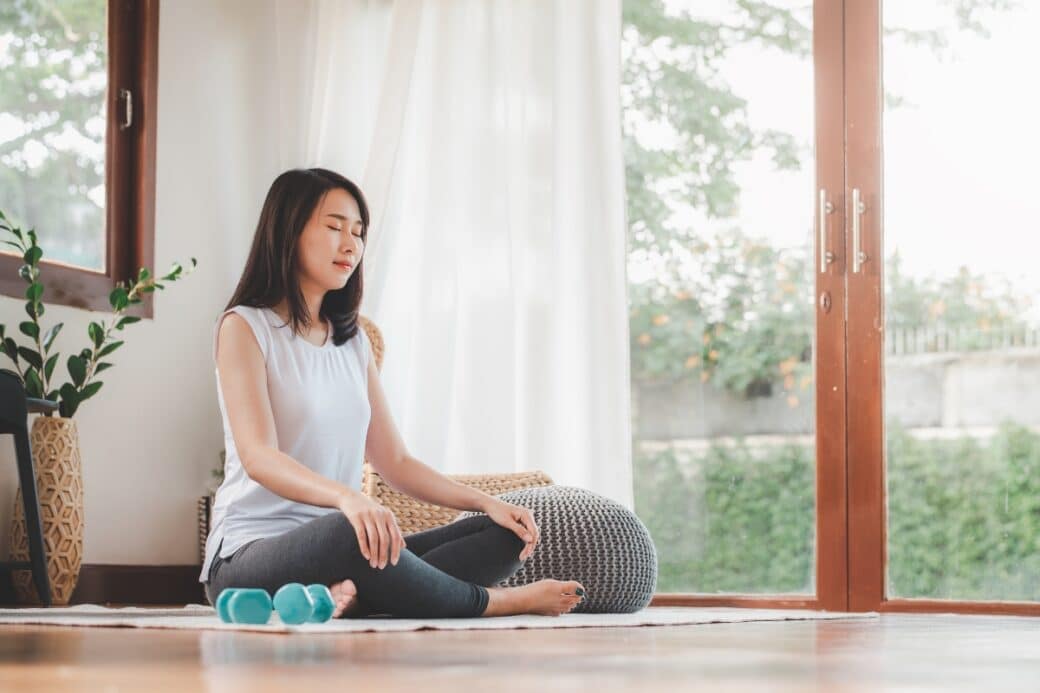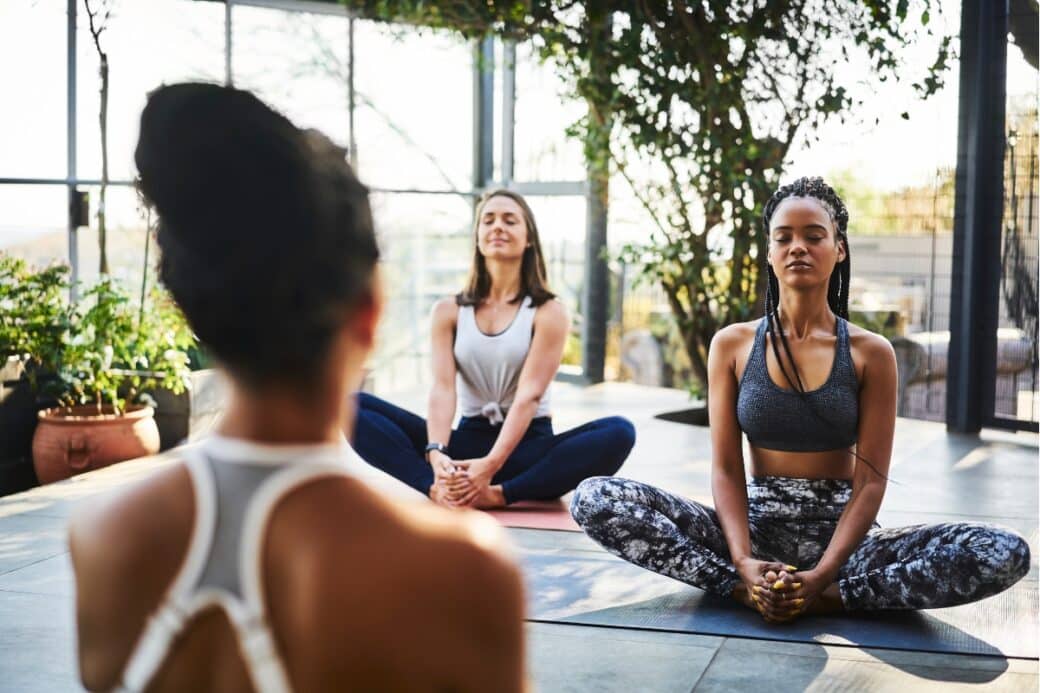Imagine being able to quiet your racing thoughts, find inner peace, and cultivate a deep sense of focus. In the fast-paced world we live in, it can be challenging to tame the mind and truly concentrate on one thing. However, by learning how to meditate on something and harness the power of your mind, you can unlock a whole new level of clarity and presence. In this article, we will explore effective techniques to help you focus your mind and experience the transformative benefits of meditation. So, get ready to embark on a journey of self-discovery and learn how to tap into the incredible potential of your mind.

Understanding the Fundamentals of Meditation
Defining meditation and its purpose
Meditation is a practice that involves training your mind to focus and redirect your thoughts. It is often used to achieve a state of mental clarity and emotional calmness. The purpose of meditation is to cultivate mindfulness, develop inner peace, and enhance overall well-being.
Exploring the types and techniques of meditation
There are various types of meditation, each with its own techniques and approaches. Some popular forms of meditation include mindfulness meditation, loving-kindness meditation, transcendental meditation, and guided visualization. Techniques may involve focusing on the breath, repeating mantras, visualizing peaceful images, or simply being present in the moment.
Benefits and importance of meditation
The benefits of meditation are numerous and have been backed by scientific research. Regular meditation practice has been shown to reduce stress, improve concentration, lower blood pressure, boost immunity, increase self-awareness, and promote emotional well-being. It can also help manage anxiety, depression, and insomnia. Meditation is an essential tool for cultivating a balanced and peaceful mind in our fast-paced and demanding lives.
Preparation for Meditation
Creating a conducive environment for meditation
Before you begin your meditation session, it is important to create a peaceful and distraction-free environment. Find a quiet space where you feel comfortable and relaxed. Dim the lights, remove any clutter, and create a serene atmosphere with soft music or incense if desired. This will help you create a calming ambiance conducive to deep meditation.
Finding a quiet and comfortable position
Choose a position that allows you to sit comfortably for an extended period of time. While many people sit cross-legged on the floor, you can also sit on a cushion or a chair if that is more comfortable for you. Make sure your spine is upright but relaxed, allowing the natural curves of your back to be maintained. Rest your hands on your lap or in a comfortable position.
Wearing comfortable clothing
To ensure maximum comfort during meditation, it is advisable to wear loose-fitting and non-restrictive clothing. This allows for unrestricted movement and prevents any discomfort that tight clothing may cause. Choose fabrics that feel soft against your skin and promote a sense of ease and relaxation.
Setting realistic meditation goals and schedules
It is important to set realistic goals and establish a regular meditation schedule. Start with shorter sessions, such as 5-10 minutes, and gradually increase the duration as you become more comfortable. Consistency is key when it comes to meditation, so try to incorporate it into your daily routine. Find a time of day that works best for you, whether it’s in the morning, during a lunch break, or in the evening before bed.

Breathing Techniques for Meditation
Understanding the correlation between breath and mind
The breath is closely linked to the mind, and by focusing on the breath, we can bring the mind into a state of calm and concentration. Paying attention to your breath allows you to become more present in the moment, letting go of distractions and entering a state of deep relaxation.
Practicing deep and controlled breathing
Deep breathing is a fundamental technique in meditation. Take slow, deep breaths in through your nose, filling your diaphragm and lungs with air. Exhale slowly through your mouth, releasing any tension or stress. Focus on the sensation of the breath entering and leaving your body, allowing it to anchor your attention and bring you into a state of tranquility.
Using breath to anchor your focus
During meditation, you can use the breath as an anchor for your focus. Gently bring your attention to the sensation of the breath at a specific point, such as the nostrils, chest, or abdomen. Notice the rising and falling of the breath, and whenever your mind wanders, gently guide it back to the breath. The breath serves as a constant point of reference, helping you maintain concentration and mindfulness.
Choosing a Meditation Object or Concept
Deciding on an object or issue to focus on during meditation
Choosing a meditation object or concept is a personal preference and depends on your individual goals and interests. You can choose to focus on a specific object, such as a candle flame, a flower, or a symbolic image. Alternatively, you may opt to meditate on an issue or intention, such as gratitude, compassion, or self-love. Experiment with different options to find what resonates with you.
Using concrete objects vs abstract concepts
Concrete objects provide a tangible and visually stimulating focus for your meditation practice. They can help ground your attention and provide a sense of stability. Abstract concepts, on the other hand, allow for greater flexibility and exploration of different emotions and qualities. Whether you choose a concrete object or abstract concept, both can be powerful tools for deepening your meditation practice.

Beginning the Focus Meditation
Clearing your mind before you start
Before you begin your focus meditation, take a few moments to clear your mind and let go of any thoughts or distractions. Close your eyes and take a few deep breaths, allowing your mind and body to relax. Release any tension or negativity and create a mental space for calm and focused awareness.
Concentrating on your chosen object or concept
With a clear and calm mind, bring your attention to your chosen object or concept for meditation. If you have chosen a concrete object, observe its details, colors, and textures. If you are focusing on an abstract concept, bring to mind the qualities or emotions associated with it. Allow your mind to fully engage with your chosen focus, immersing yourself in the experience.
Acknowledging thoughts without judgment
During your focus meditation, it is natural for thoughts to arise. Instead of getting caught up in them or trying to suppress them, simply acknowledge their presence without judgment. Let them pass like clouds in the sky and gently guide your attention back to your chosen focus. By practicing non-judgmental awareness, you cultivate a sense of detachment and peace amidst the fluctuations of the mind.
Maintaining Concentration during Meditation
Overcoming distractions and discursive thoughts
Distractions and discursive thoughts are inevitable during meditation. Whether it’s external sounds, bodily discomfort, or internal chatter, these distractions can pull you away from your chosen focus. To overcome them, maintain a gentle yet firm attitude. Acknowledge the distraction, let it go, and redirect your focus back to your meditation object or concept. With practice, you will develop the ability to remain centered and undisturbed.
Returning your focus to the meditation object
Whenever you notice that your attention has wandered, gently bring it back to your chosen focus. Be patient and compassionate with yourself, recognizing that losing focus is a normal part of the meditation process. With each return to your object of meditation, you strengthen your concentration and deepen your awareness.
Being patient with your progress
Progress in meditation takes time and patience. It is important to let go of any expectations or judgments about your experience. Instead, adopt a mindset of curiosity and open-mindedness. Every meditation session is different, and each moment of presence and awareness is a step forward. Trust in the process and be kind to yourself as you continue your meditation journey.

Utilizing Mindfulness in Focus Meditation
Understanding the role of mindfulness in focus meditation
Mindfulness is the practice of being fully present in the moment, without judgment. In focus meditation, mindfulness plays a crucial role in maintaining concentration and deepening your awareness of the chosen object or concept. By cultivating mindful attention, you develop a heightened sense of clarity and insight, allowing for a richer meditation experience.
Practicing mindfulness throughout your daily activities
Mindfulness is not limited to meditation alone. It is a way of being that can be integrated into your daily activities. Practice mindfulness during everyday tasks, such as eating, walking, or brushing your teeth. Pay attention to the sensations, smells, tastes, and sounds of the present moment. By incorporating mindfulness into your daily life, you enhance your overall well-being and strengthen your meditation practice.
Integrating mindfulness and concentration in your meditation
In focus meditation, mindfulness and concentration are like two sides of the same coin. While concentration allows you to maintain a steady focus on your chosen object or concept, mindfulness helps you stay present and aware of any arising thoughts or distractions. By combining both aspects, you cultivate a balanced and harmonious meditation practice that deepens your connection to the present moment.
Implementing Visualization Techniques
Understanding visualization in meditation
Visualization is a powerful technique that involves creating mental images to support your meditation practice. By visualizing specific scenes, objects, or concepts, you can enhance your focus, concentration, and overall meditation experience. Visualization taps into the power of imagination and is a valuable tool for deepening your connection to your chosen meditation object or concept.
Practicing different types of visualization
There are various types of visualization techniques you can explore during your meditation practice. You can visualize peaceful landscapes, imagine yourself surrounded by loving energy, or picture vibrant colors associated with specific emotions. Experiment with different visualizations to find what resonates with you and supports your meditation goals.
Linking visualization with your chosen focus point
When utilizing visualization techniques, it is important to connect the visualized imagery with your chosen focus point. For example, if you are meditating on self-compassion, visualize yourself enveloped in a warm and nurturing light. If your focus is on gratitude, imagine yourself surrounded by all the people, experiences, and things you are grateful for. By linking visualization with your chosen focus, you deepen your connection and enhance your meditation practice.
Transitioning Out of Meditation
Gradually ending your meditation session
As your meditation session comes to a close, it is important to transition out of the state of deep relaxation and mindfulness. Slowly become aware of your surroundings, gently open your eyes, and take a few deep breaths. Allow your body to readjust and stretch if needed. Take a moment to appreciate the stillness and peace you have cultivated within yourself.
Reflecting on your meditation experience
After each meditation session, take a few moments to reflect on your experience. Notice any shifts in your mental and emotional state, and acknowledge any insights or moments of clarity that arose during the practice. Reflecting on your experiences can help you deepen your understanding of yourself and further integrate the benefits of meditation into your daily life.
Implementing insights from your meditation into your daily life
The true essence of meditation lies in its integration into your everyday life. Take the insights and awareness gained during your meditation practice and apply them to your interactions, decisions, and activities throughout the day. Use meditation as a tool to cultivate a sense of calm, compassion, and clarity in all aspects of your life, fostering greater well-being and happiness.
Advanced Focus Meditation Techniques
Practicing without a specific object or concept
As you progress in your meditation journey, you may choose to explore more advanced techniques that involve meditating without a specific object or concept. Instead, you cultivate a state of open awareness, allowing thoughts and sensations to arise and pass without attachment or judgment. This form of meditation deepens your sense of inner stillness and expands your capacity for mindfulness.
Dealing with deep-seated thoughts and emotions
Advanced focus meditation techniques can also help you address deep-seated thoughts and emotions that may arise during your practice. By gently observing and acknowledging these thoughts and emotions, you create space for healing and transformation. With consistent practice, you can develop greater equanimity and resolve underlying issues that may have hindered your personal growth.
Progressing towards broader awareness and openness
As you continue to deepen your focus meditation practice, you may find yourself naturally progressing towards a broader awareness and openness. This is a state of expanded consciousness where you become more attuned to the interconnectedness of all things. Your focus extends beyond specific objects or concepts, and you develop a profound sense of unity and compassion for all beings.
In conclusion, meditation is a powerful practice that offers numerous benefits for your physical, mental, and emotional well-being. By understanding the fundamentals of meditation, preparing yourself effectively, and utilizing various techniques to focus your mind, you can embark on a transformative journey of self-discovery and inner peace. Remember to be patient, compassionate, and consistent in your meditation practice, as the true essence of meditation lies in its integration into your everyday life. So, take a deep breath, find your quiet corner, and embark on this beautiful journey of meditation, where you can nurture and nourish your mind, body, and soul.




